Wednesday, May 16, 2007
INSIDE THE KGB & IRAN ASPECTS
Inside the KGB: Myth and Reality. - book reviews
Washington Monthly, April, 1991 by Maxim Kniazkov
Inside the KGB: Myth and Reality. Vladimir Kuzichkin. Pantheon, $25.00.
There is certainly no lack of books about the KGB in the West. John Barron, Stanislav Levchenko, Oleg Gordievsky, and scores of other experts on Soviet espionage have contributed immensely to the understanding of what is going on in the huge building dominating Dzerzhinsky Square in Moscow. Yet Vladimir Kuzichkin’s book offers a glance at the KGB from quite an unusual angle.
Up to now this agency has been almost universally portrayed as an omnipotent, unscrupulous, and highly effective intelligence service for which no task is too difficult. This is partly true.
But as Soviets like myself understand, the KGB is not a separate island within Soviet society. It is an integral part. Therefore, all the ills of the society-corruption, patronage, overwhelming bureaucracy, and lack of initiative—do not spare the KGB. As it appears from Kuzichkin’s book, the KGB suffers as much from the incompetent intrusions of Communist party apparatchiks as any other institution in the Soviet Union.
For years I lived under the misapprehension that the KGB was probably the only remaining Soviet institution that doesn’t do its hiring by nepotism. Kuzichkin’s book shattered that illusion. For example, he mentions the name of Valery Maisuradze, the son of the KGB deputy chief in Georgia, who surely made his way to the First Directorate with help from his father. (Why did he prefer the First Directorate to staying in his native Georgia? Because it promises lucrative careers overseas. Intelligence work means dollars instead of worthless rubles.)
Coincidence or not, about 10 years ago a person named Valery Maisuradze came to the TASS news agency of the USSR, where I had worked for more than 13 years; after a brief stint at the foreign desk he went straight to our bureau in London, where he worked for several years before the British swept him away during one of their regular purges of the Soviet community.
We were not friends, but I talked to him a couple of times and edited a lot of his news stories. My opinion: Nothing can be further apart than this man and everything that is associated with the word intelligence.” If this Maisuradze and the one mentioned in the book are the same person, I feel sorry for the KGB.
Nepotism is a very dangerous disease, capable of destroying any institution. It can never be limited. Once a relative of a high official is accepted to a lucrative position, say, at the KGB, there will be scores of other bureaucrats wanting the same favor. It is hard to say no without offending them and making highly placed enemies.
So even if this process started at the KGB only 10 years ago, its intelligence-gathering capacities should be significantly eroded by now. Would all these sons and in-laws risk their dollar salaries to obtain useful information or recruit an agent? I bet they wouldn’t, especially since they have highly placed relatives to protect them. So they probably prefer to clip newspapers, send Moscow phony reports, and collect their hard-currency paychecks.
That’s why the KGB, as Kuzichkin points out, can count its recruited agents in any given country on the fingers of one hand. Those grandsons and nephews want to protect their dollars and rubles regardless of their performance. In part, this is what lies behind the recent aggressive speeches by KGB Chairman Vladimir Kryuchkov, who viciously attacked the reformist forces in the Soviet Union.
Besides offering a window into the KGB culture, Kuzichkin provides these revelations:
* Worried by the rapprochement between Teheran and
Washington in 1961, the Kremlin ordered the KGB to assassinate the Shah.
Mohammad Reza Pahlavi was to be killed by the explosion of a powerful bomb hidden in a car parked on one of his usual routes. A radio-operated detonator had to be triggered by an unnamed illegal KGB agent who worked undercover in Iran.
Only a miracle saved the life of the Iranian monarch. When the Shah’s motorcade passed near the Volkswagen stuffed with explosives, the agent, obviously nervous, pressed the button on the remote control device but didn’t hold it long enough for the signal to go through. The car drove on, oblivious.
* In 1979, before the Soviet invasion, the KGB tried to assassinate Afghani leader Hafizullah Amin, who had ousted and killed Afghanistan’s pro-Moscow president, Noor Mohammed Taraki.
This task was assigned to KGB Lt. Colonel Mikhail Talybov. Posing as an Afghani citizen, he was sent to Kabul and managed to infiltrate the staff of the presidential palace. Working in the kitchen as a cook, Talybov on several occasions added poison to Amin’s food and drinks. But the Afghani ruler was smart enough never to drink from only one glass or eat from one dish at a time. Talybov’s mission came to nothing. (Had this operation succeeded, one wonders what course the events in Afghanistan might have taken.)
* Sadegh Ghotbzadeh, appointed foreign minister of Iran in 1979, was an agent of the Soviet military intelligence service in his youth, having been recruited while studying in the United States.
But Ghotbzadeh eventually grew disillusioned with communism and stopped all cooperation with the USSR. Moreover, he developed an acute animosity toward the Soviets, which he showed amply during his tenure as foreign minister.
The Kremlin was so angry with him that it ordered the KGB to destroy him politically, and if possible, physically. The natural course of events played into the hands of the KGB. Ghotbzadch fell out of grace with Ayatollah Khomeini and was arrested.
Nevertheless, the KGB decided to hammer one more nail into his coffin. Its residency in Teheran fabricated a false CIA cable to an unnamed American agent in Iran. The contents of the dispatch made it clear that this agent was in fact the former Iranian foreign minister. The KGB planted the parcel containing the cable in a way that the Iranian security service could easily discover it.
Ghotbzadeh was shot in September of 1982.
Subscribe to:
Post Comments (Atom)

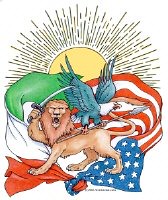
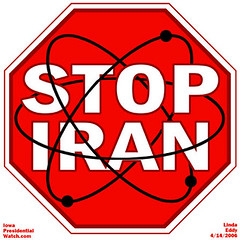

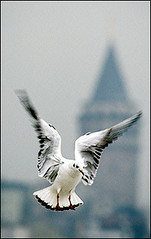



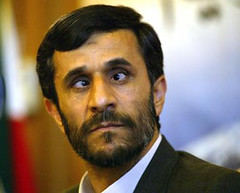

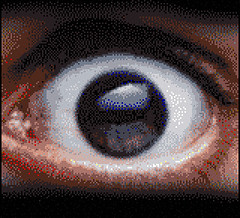

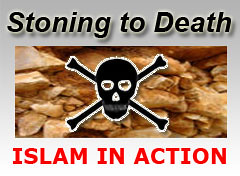

No comments:
Post a Comment